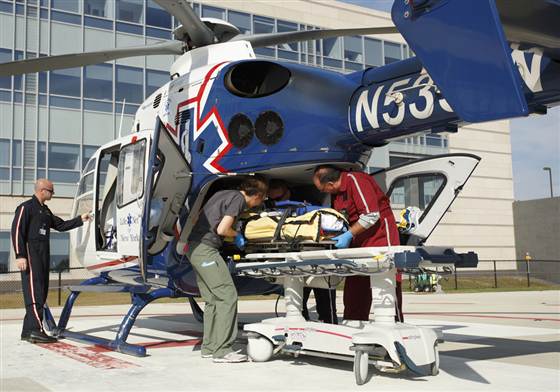JoNel Aleccia
NBC News
July 16, 2013
For the 446-pound patient in New Mexico, having a heart attack wasn’t the worst thing that happened last April.
Even more harrowing was being turned down by the air ambulance that came to the rescue — because the victim was too big to get off the ground.
“It’s an issue for sure,” said Craig Yale, vice president of corporate development for Air Methods, one of the nation’s biggest air medical transport providers. “We can get to a scene and find that the patient is too heavy to be able to go.”
Increasingly, America’s growing girth is grounding patients who need emergency help by air, say Yale and other operators. An estimated 5,000 super-sized patients a year – or about 1 percent of more than 500,000 medical air flights annually in the U.S. – are denied transport because they exceed weight and size limits or because they can’t fit through the aircraft doors.
Experts say the nation’s plus-size proportions – at least two-thirds of adults are overweight or obese – are now forcing emergency medical providers to bolster their fleets, buying bigger helicopters and fixed-wing planes, or risk leaving critically ill and injured clients behind.
Just this spring alone, records show that at least three other Air Methods patients were declined, including a 460-pound Texas victim who couldn’t breathe, a 444-pound Arizona patient with severe abscesses and cellulitis and a 225-pound Arizona patient who had an infection caused by flesh-eating bacteria and couldn’t be transported by a responding helicopter.
In such cases, the next option is to go by ground ambulance, which can take twice as long – often in situations where every second counts. A 2011 study in the journal of Academic Emergency Medicine found that patients transported by medical helicopter were a third less likely to die than those who went by ground.

